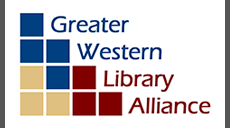Event Title
OER adoption: Moving beyond early adopters and empowering everyone else to use the OER, too
Presentation type
Presentation
Start Date
1-8-2018 3:00 PM
End Date
1-8-2018 3:45 PM
Proposal Abstract
This session will explore Stage 2 of the OER adoption process. If Stage 1 is that joyful moment when you have selected an OER that is on topic and relevant for your students’ learning, then Stage 2 is when you figure out how to actually implement the OER. As partners in creating the New Literacies Alliance (NLA) suite of online tutorials, we have been there and done that. NLA tutorials are freely available under a Creative Commons BY-NC-SA license. We know that the transition between deciding to use an OER and widely incorporating it into classes is a challenge. You tried it. You liked it. And now you want all your colleagues to realize the benefits too. Except, sometimes they don’t seem to feel the love the same way you did.
Part of the challenge can be described using the technology adoption curve. The small percentage of early adopters will readily accept and begin using the OER with little support. However, many librarians and course instructors will fall into the majority group - those who need more support. The majority adopt technology and OERs later for a variety of logistical and pedagogical reasons. They are not necessarily opposed to new learning opportunities, but need more support. Additionally, they may not be able to articulate what that support should be, and it can vary from person to person. For instance, one librarian may not be fluent enough in the campus learning management system to know how to embed an OER into an online course. Another librarian may be unsure of how to discuss the learning benefits of an OER with their course faculty. Some librarians may wonder if the OER displaces them from a course.
Using examples from NLA, we will share resources we developed or are experimenting with to increase our adoption rate. These will include:
-
Primers (or pre-packaged language) that help librarians discuss the OERs with course instructors.
-
“How to do it” guides to help librarians and course instructors figure out the logistics of inserting OERs into a website, course management system, or classroom environment.
-
Pedagogical approaches for inserting OERs into a course (e.g. online only, blended, in-person).
This session will be appropriate for the individual librarian looking for ideas for experimenting with their instruction plan; instruction coordinators or departments heads looking for tips on broadly implementing OERs; and instructional designers and instruction design librarians needing resources to balance the joy of a fabulous OER with the mundanity of implementation. We also welcome those who have successfully implemented OERs past the early adoption phase because we want to steal your ideas.
Audience Type
Anyone interested in OER
Outcomes
Attendees will become aware of barriers to widespread adoption of an OER. Attendees will explore and discuss tools that empower librarians to adopt OERs.
Recommended Citation
Anderson, Alice and Kearns, Sara K (2018). "OER adoption: Moving beyond early adopters and empowering everyone else to use the OER, too," OER From Vision to Action. https://newprairiepress.org/oer_fromvisiontoaction/2018/presentations/3
Presentation Slides
Included in
OER adoption: Moving beyond early adopters and empowering everyone else to use the OER, too
This session will explore Stage 2 of the OER adoption process. If Stage 1 is that joyful moment when you have selected an OER that is on topic and relevant for your students’ learning, then Stage 2 is when you figure out how to actually implement the OER. As partners in creating the New Literacies Alliance (NLA) suite of online tutorials, we have been there and done that. NLA tutorials are freely available under a Creative Commons BY-NC-SA license. We know that the transition between deciding to use an OER and widely incorporating it into classes is a challenge. You tried it. You liked it. And now you want all your colleagues to realize the benefits too. Except, sometimes they don’t seem to feel the love the same way you did.
Part of the challenge can be described using the technology adoption curve. The small percentage of early adopters will readily accept and begin using the OER with little support. However, many librarians and course instructors will fall into the majority group - those who need more support. The majority adopt technology and OERs later for a variety of logistical and pedagogical reasons. They are not necessarily opposed to new learning opportunities, but need more support. Additionally, they may not be able to articulate what that support should be, and it can vary from person to person. For instance, one librarian may not be fluent enough in the campus learning management system to know how to embed an OER into an online course. Another librarian may be unsure of how to discuss the learning benefits of an OER with their course faculty. Some librarians may wonder if the OER displaces them from a course.
Using examples from NLA, we will share resources we developed or are experimenting with to increase our adoption rate. These will include:
-
Primers (or pre-packaged language) that help librarians discuss the OERs with course instructors.
-
“How to do it” guides to help librarians and course instructors figure out the logistics of inserting OERs into a website, course management system, or classroom environment.
-
Pedagogical approaches for inserting OERs into a course (e.g. online only, blended, in-person).
This session will be appropriate for the individual librarian looking for ideas for experimenting with their instruction plan; instruction coordinators or departments heads looking for tips on broadly implementing OERs; and instructional designers and instruction design librarians needing resources to balance the joy of a fabulous OER with the mundanity of implementation. We also welcome those who have successfully implemented OERs past the early adoption phase because we want to steal your ideas.




